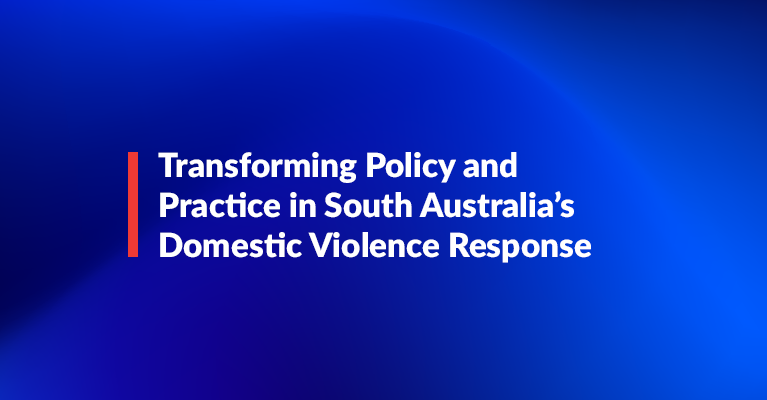As AI becomes more common in legal practice, many professionals are discovering an unexpected challenge: their tools don’t always work together. A typical day for an Australian lawyer might involve switching...
Kiren Chitkara , Legal Writer, Practical Guidance Succession Chloe Silvester , Head of General Practice, Practical Guidance November 2025 marks one of the most significant transformations in Australia...
For decades, LexisNexis ® has defined legal research. But research is just the beginning. Today, we’re transforming the entire legal workflow, evolving from a research provider into a technology partner...
Authored by Seeta Bodke, Head of Product - Pacific, LexisNexis® Legal & Professional We all know the stories: briefs cited fake cases. Submissions with phantom judgments. Entire arguments are built on...
Capital Monitor™ Editorial by Keely Garcia A single week in November 2023 saw four women lose their lives in South Australia amid domestic and family violence, an alarming record across any Australian...

In Kozarov v Victoria [2022] HCA 12 (Kozarov), the High Court decided an employer had a common law duty to take reasonable steps to manage mental health risks inherent to an employee’s job.
This duty existed regardless of whether the employee showed warning signs of mental illness.
What needed to be done and was not done to avoid Psychosocial hazards?
The employee in question, Ms Kozarov, was a solicitor who worked with survivors of trauma in a Specialist Sexual Offences Unit (SSOU) within the Victorian Office of Public Prosecutions (OPP).
Ms Kozarov was employed by the Victorian Government and the inherent mental health risks of her job (and that of her colleagues) were explicitly acknowledged in the Vicarious Trauma Policy.
In this case, the Victorian Government should have had an active OH&S framework, provided more intensive training for management and staff regarding the risks to staff posed by vicarious trauma and post-traumatic stress disorder, conducted welfare checks and made the offer of referral for a work-related or occupational screening if staff showing heightened risk and should have implemented a flexible approach to work allocation, especially where required in response to screening, including the option of temporary or permanent rotation from the SSOU where appropriate.
The Victorian Government failed to take these steps and breached its common law duty which caused the exacerbation and prolongation of Ms Kozarov’s injuries to her mental health.
Psychosocial risks in the workplace and safe work regulators
Employers (and PCBUs) also have a statutory duty to prevent or mitigate psychosocial risks, both at a job level and at an organisational level.
Psychosocial risks are increasingly becoming a focus point for safe work regulators across Australia.
In New South Wales, the Code of Practice — Managing Psychosocial Hazards at Work (Code) identifies common psychosocial or mental health hazards such as role overload, insufficient work, being exposed to traumatic events, conflicting work priorities, low job control, poor workplace relationships, workplace violence, harassment or discrimination, inadequate reward/recognition, hazardous physical environments, poor decision-making processes or inadequate consultation or communication about organisational change.
Comcare also confirms psychosocial hazards arising through bullying in the workplace, fatigue, mental stress, overseas work, remote or isolated work, workplace change and workplace violence or customer aggression which have the potential to cause psychological or physical harm. Recognising the importance of this, Comcare is involved in several mental health initiatives, including a guide on how to meet those duties and what to do to prevent injuries from psychosocial hazards.
Safe work regulators in Victoria, Western Australia, South Australia, Northern Territory, Australian Capital Territory, Queensland and Tasmania similarly identify risks to mental health inherent in the design or management of work and the obligations of business to prevent and manage psychosocial risks which may lead to harm.
This casts a wide net and begs the question as to whether any job is truly psychologically safe.
Other potential legal claims
Employers who fail to satisfy their obligations to take steps to manage risks to mental health may also face other legal claims, including:
- unfair dismissal claims where an employee is dismissed without a fair reason or fails to follow a fair procedure in circumstances where misconduct or poor performance is caused (even in part) by a work-related mental health issue;
- general protection claims where an employee is treated adversely because they have asserted a right that they have a safe workplace (eg, complaints about work-related stress, inappropriate workplace behaviours etc.);
- risks of industrial disputes;
- discrimination or harassment on protected grounds, eg, disability, sex, age, race etc;
- workers' compensation;
- as a worst-case scenario, liability for industrial manslaughter (ie, depending on the jurisdiction in which the employee works); and
- breaches of privacy laws in the handling of related personal and health record information.
For some of these claims, liability extends well beyond “employees” and includes deemed employees (eg, workers compensation) or any person who is providing the business with services in the workplace (eg, volunteers etc under work health and safety laws).
So, what can businesses do to mitigate Psychosocial hazards for employees?
At a general level, employers must have policies dealing with inappropriate work behaviours (eg, bullying and sexual harassment, etc) and, if necessary, mental health in the workplace. Employees at all levels must be given adequate training and policies must be applied consistently.
Failing to have policies supported by quality training may lead to a business being vicariously liable for an employees’ inappropriate workplace behaviours, as was the case in Oliver v Bassari (Human Rights) [2022] VCAT 329 where a business was ordered to pay damages of $150,000 to an ex-employee in respect of a colleague’s sexual harassment.
As a work health and safety imperative, psychosocial risks may be prevented or, where not possible, mitigated through suitable controls. This requires businesses to:
- consult with employees and health and safety representatives (ie, including union representatives as required);
- identify psychosocial risks across the organisation, for classes of employees and for particular types of jobs;
- consider the likelihood of the identified psychosocial hazards occurring;
- determine the consequence of the psychosocial hazard occurring;
- calculate risk levels by reference to the likelihood and consequence (ie, risk matrix);
- identify remedial measures through various forums and activities, including by consultation;
- consider and record the effectiveness of the measures through regular follow-up assessments (eg, anonymous employee surveys);
- consider additional measures/controls as appropriate which may more effectively manage psychosocial risks or deal with residual risks; and
- support this process with ongoing support and training of workers at all levels.
When considering disciplinary measures or other adverse actions, a best practice employer will take a big-picture view of the underlying reasons for the non-performance or misconduct. For example, is it due to psychosocial hazards — ie, insufficient resourcing, bullying or harassment or a person’s disability? If so, it may be wise to take steps to address those hazards before going down the performance management path.
It is also important to remember that privacy laws apply to the handling of personal information and health records in this context and must be complied with, eg Privacy Act 1988 (Cth) and applicable state and territory legislation.





